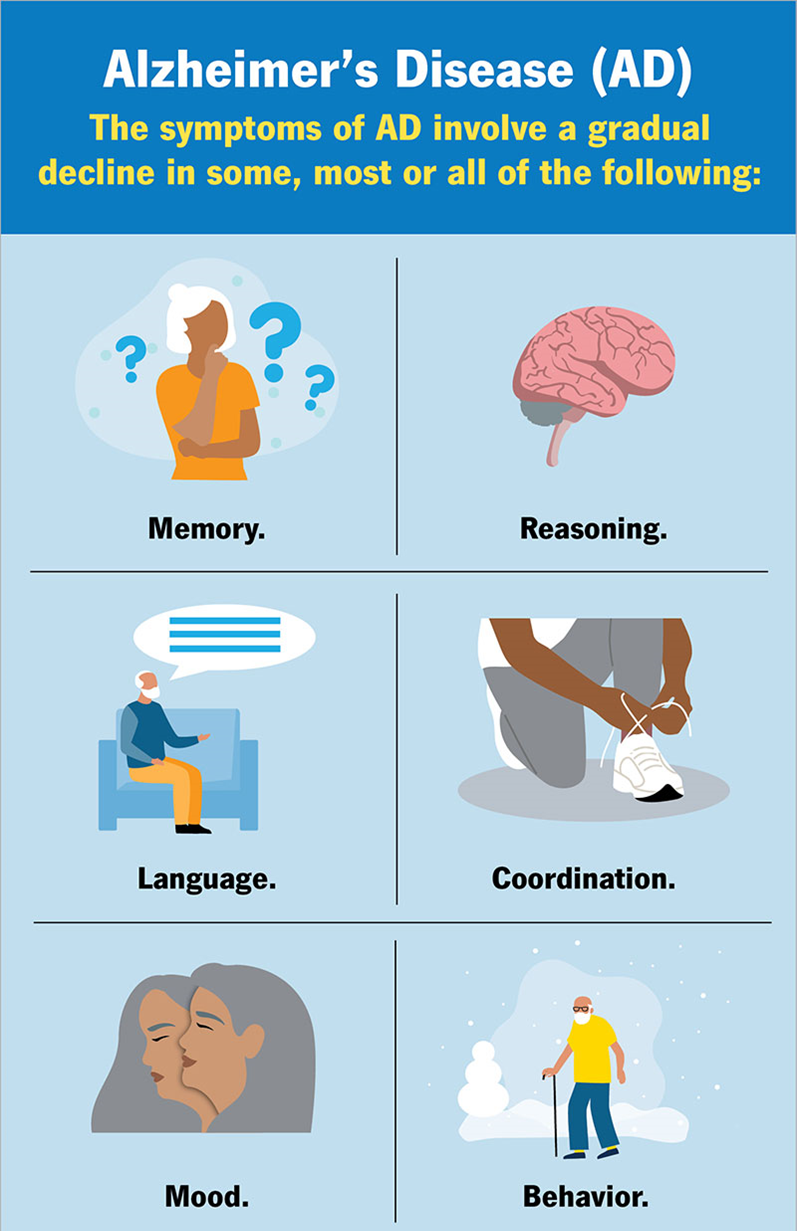A patient with mild Alzheimer’s disease is prescribed to take galantamine. Which statement best describes how this medication works to treat this disease?
Prevents the breakdown of acetylcholine.
Decreases amyloid plaques in the brain.
Increases acetylcholine levels in the brain.
Limits neurotransmitter engagement of NMDA receptors
The Correct Answer is A
Choice A Reason:
Prevents the breakdown of acetylcholine.
Galantamine is an acetylcholinesterase inhibitor, which means it works by preventing the breakdown of acetylcholine in the brain. Acetylcholine is a neurotransmitter that is important for memory and learning. By inhibiting the enzyme that breaks down acetylcholine, galantamine increases the levels of acetylcholine available in the brain, which can help improve cognitive function in patients with Alzheimer’s disease1. This mechanism of action is crucial because it directly addresses the cholinergic deficit observed in Alzheimer’s disease.

Choice B Reason:
Decreases amyloid plaques in the brain.
This statement is incorrect. Galantamine does not work by decreasing amyloid plaques in the brain. Amyloid plaques are one of the pathological hallmarks of Alzheimer’s disease, but galantamine’s primary mechanism of action is related to acetylcholine metabolism. Other treatments and research efforts focus on targeting amyloid plaques, but this is not the function of galantamine.
Choice C Reason:
Increases acetylcholine levels in the brain.
While this statement is partially correct, it is not as precise as the correct answer. Galantamine increases acetylcholine levels indirectly by preventing its breakdown rather than directly increasing its production. The distinction is important because the therapeutic approach involves inhibiting the enzyme acetylcholinesterase, which breaks down acetylcholine, thereby increasing its availability.
Choice D Reason:
Limits neurotransmitter engagement of NMDA receptors.
This statement is incorrect. Limiting neurotransmitter engagement of NMDA receptors is the mechanism of action for a different class of Alzheimer’s medications, such as memantine. Galantamine does not affect NMDA receptors; instead, it enhances cholinergic function by inhibiting acetylcholinesterase and potentiating nicotinic receptors.
Nursing Test Bank
Naxlex Comprehensive Predictor Exams
Related Questions
Correct Answer is A
Explanation
Choice A Reason:
This will help with medication compliance.
This is the correct response. Long-acting injectable (LAI) antipsychotics like risperidone IM are often used to improve medication compliance in patients who have difficulty remembering to take their oral medications regularly. By administering the medication every two weeks, the treatment team can ensure that the client receives a consistent dose, reducing the risk of relapse due to missed doses. This approach is particularly beneficial for clients with schizophrenia, as consistent medication adherence is crucial for managing symptoms and preventing hospitalizations.
Choice B Reason:
It will help him remember to take his medication.
While this statement is related to medication compliance, it is not entirely accurate. The purpose of switching to an injectable form is to eliminate the need for the client to remember to take daily doses. Instead, the healthcare provider administers the medication at regular intervals, ensuring adherence without relying on the client’s memory.
Choice C Reason:
This has a faster onset of action.
This statement is incorrect. The onset of action for long-acting injectable risperidone is not necessarily faster than the oral form. In fact, LAIs are designed to release the medication slowly over time to maintain stable blood levels. The primary advantage of LAIs is improved adherence, not a faster onset of action.
Choice D Reason:
This new medication is stronger and will clear his symptoms faster.
This statement is also incorrect. The strength of the medication and the speed at which it clears symptoms are not the primary reasons for switching to an injectable form. The goal is to ensure consistent medication levels and improve adherence, not to increase the potency or speed of symptom relief.
Correct Answer is C
Explanation
Choice A Reason:
Aggressive and angry.
Aggressive and angry behavior is not indicative of apathy. Apathy is characterized by a lack of interest, enthusiasm, or concern. Aggression and anger are more likely to be associated with other symptoms of schizophrenia, such as paranoia or frustration, rather than apathy.
Choice B Reason:
Concerned over recent events.
Being concerned over recent events shows an active engagement with one’s environment and emotions. This is the opposite of apathy, which involves a lack of interest or concern. Therefore, this behavior does not align with the definition of apathy.
Choice C Reason:
Indifferent to their surroundings.
This is the correct response. Indifference to one’s surroundings is a clear sign of apathy. In schizophrenia, apathy is a common negative symptom and involves a diminished ability to initiate and sustain activities, including social interactions. This lack of interest or motivation is a key feature of apathy.
Choice D Reason:
Supportive in group.
Being supportive in a group setting indicates active participation and concern for others, which is not consistent with apathy. Apathy would manifest as a lack of engagement or interest in group activities and interactions.
Whether you are a student looking to ace your exams or a practicing nurse seeking to enhance your expertise , our nursing education contents will empower you with the confidence and competence to make a difference in the lives of patients and become a respected leader in the healthcare field.
Visit Naxlex, invest in your future and unlock endless possibilities with our unparalleled nursing education contents today
Report Wrong Answer on the Current Question
Do you disagree with the answer? If yes, what is your expected answer? Explain.
Kindly be descriptive with the issue you are facing.
